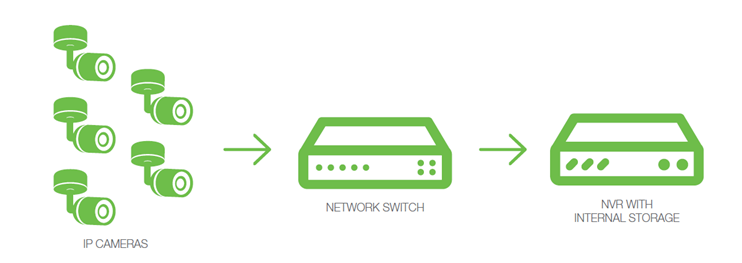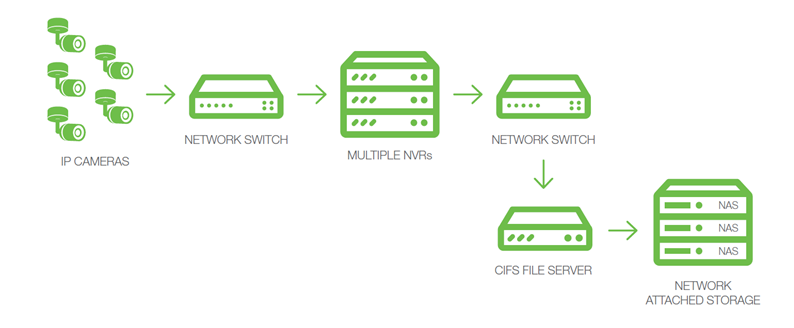
Implementing Storage Area Networks (SANs) for Video Security
The evolving video security landscape demands higher-capacity and high-performance storage solutions.
The shift from analog to digital recording, led by IP cameras, has revolutionized image capture through advanced compression techniques. High-resolution cameras and extended retention requirements drive the need for larger storage capacities. Modern security systems must accommodate growing camera counts, longer retention periods, and changing surveillance technologies.
Organizations can gain benefits like enhanced safety, legal protection, uninterrupted operations, and valuable insights from video data. However, these advantages come with challenges, especially in utilizing existing infrastructure.

Direct Attached Storage (DAS)
Direct Attached Storage (DAS) suits compact video solutions with storage connected to a single Network Video Recorder (NVR). It lacks scalability and can lead to expensive upgrades as camera counts grow or software changes.
Traditional IT World External Network Storage
In traditional IT, as installations expand with long retention periods, Direct Attached Storage (DAS) becomes impractical. Centralized external storage comes in block storage (SAN) and file storage (NAS) systems.

Block Storage (SAN)
For video storage requiring performance and minimal frame loss, block storage (SAN) is optimal. It uses protocols like Fibre Channel or iSCSI.
Storage Area Network (SAN)
Enterprise-grade environments with numerous high-resolution cameras need a Storage Area Network (SAN). It allows multiple NVRs to access a single storage system, scalable and adaptable. SAN decouples storage and software, increasing redundancy.

Network Attached Storage (NAS)
NAS uses an IP network to access external storage but has limitations for video applications due to file-level access. It's suitable for long-term archiving.
SAN vs. NAS for Live Recording
SAN interfaces like Fibre Channel and iSCSI are more reliable than NAS interfaces. NAS systems need a dedicated storage network to achieve similar performance.
In conclusion, the evolving landscape of video security necessitates high-capacity, high-performance storage solutions. The shift to digital recording driven by IP cameras requires larger storage capacities due to high-resolution cameras and extended retention requirements. While video data offers advantages like safety and insights, challenges arise in leveraging existing infrastructure. Direct Attached Storage (DAS) suits compact setups, while traditional IT leans toward External Network Storage like SAN and NAS systems. SAN offers optimal performance, while NAS is suitable for archiving.

